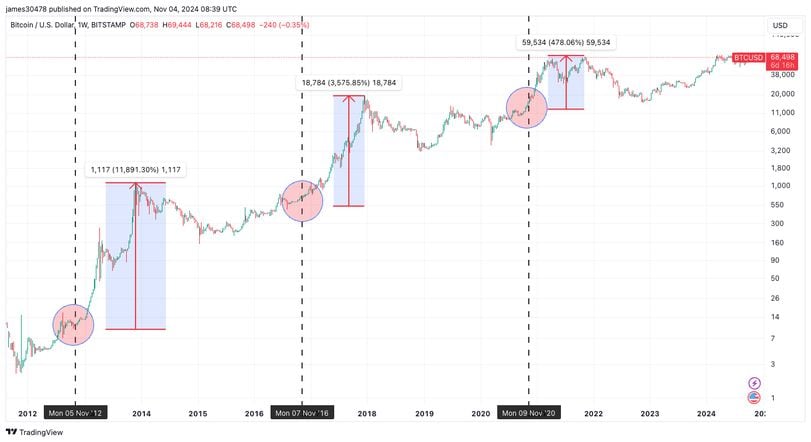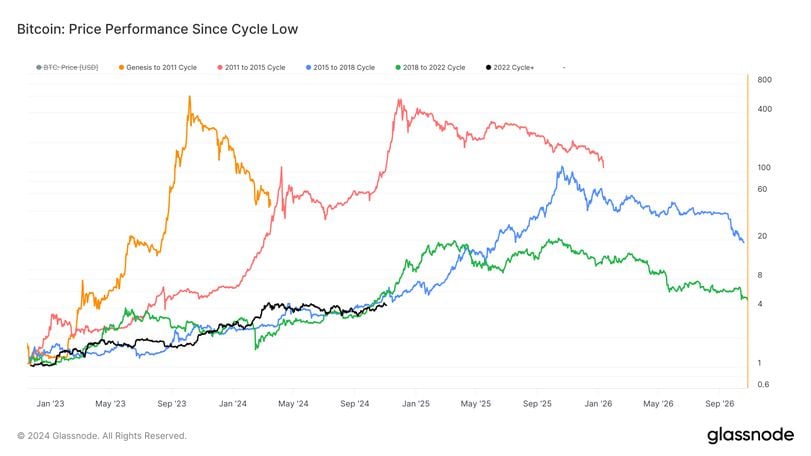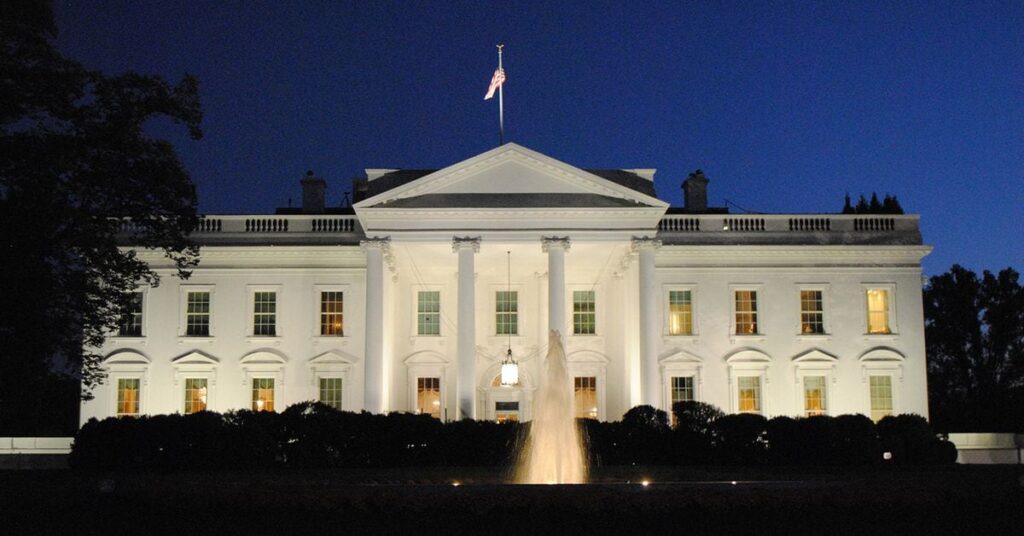Crypto markets are likely to remain volatile as we await the result of Tuesday’s U.S. presidential election. Over the short term, this will probably dictate crypto’s price movements. However, evvel the situation settles down, bitcoin (BTC) is likely to experience a significant rally if the pattern from previous votes is repeated.
Bitcoin, created in 2009, is about to experience its fourth U.S. election. Veri from the three previous times shows the largest cryptocurrency has always rallied subsequently and never dropped back to its election-day price. If this trend reoccurs, the BTC price should peak in about a year’s time.
U.S. election is a bullish catalyst for bitcoin
2012
In the 2012 U.S. election, which also took place on Nov. 5, bitcoin was hovering around $11. The top of the cycle occurred in November 2013, which saw the price rocket by almost 12,000%, with bitcoin climbing to over $1,100.
2016
Fast-forward four years. During the first week of November, the price of bitcoin was approximately $700. It peaked in December 2017 at around $18,000, appreciating about 3,600%.
2020
After the most recent vote, the November 2020 election that coincided with the Covid-19 pandemic, bitcoin rallied 478% to a market top of around $69,000 a year later. It hit a record high over $73,000 in March 2024.
After each event, with the price of bitcoin so much higher than four years before, the size of the jump has dropped, providing diminishing returns. The percentage decrease between the first and second number is 70%. Between the second and third it’s 87%. If we extend the trend and assume that this time the decrease will be around 90%, that implies a post-election rally of about 47.8%. That would take bitcoin to about $103,500 in fourth-quarter 2025.

More room for growth
Keep in mind that bitcoin is currently undervalued compared with previous cycles. That’s the case whether we measure it from the cycle low, which took place during the collapse of FTX in November 2022, as the graph below shows, or from April’s mining-reward halving.
In fact, this is the worst-performing cycle from the halving, with bitcoin just 7% higher than when the 50% cut kicked in, which adds to further evidence of the diminishing returns theory.

